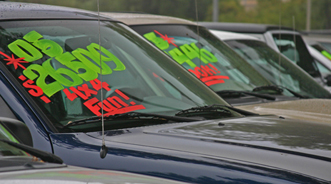Study: Canadian Used-Car Imports Lean Heavily Toward Later Model-Years

More often than not, the used vehicles flowing into Canada are relatively new, a study from DesRosiers Automotive Consultants has found.
In fact, more than two-fifths of the used cars imported to the country last year were model-year 2010, 2011 or 2012 units, DesRosiers indicated. Forty-two percent, to be more specific.
This is just one of many findings illustrated in the DesRosiers Vehicle Import Study, which examines the impact of cross-border trade on the Canadian new- and used-car business.
“The existence of an active, responsive grey market for in-demand vehicles is relevant to the interests of any business active in the new- or used-vehicle sectors in Canada,” the firm said.
“Aided by a strong dollar and the seeming stability of parity exchange rates between the U.S. and Canadian dollars, grey market vehicles have come to play an important role as buyers hunt American inventories for attractive deals,” it added.
The most heavily imported vehicles into Canada last year were from Chevrolet, Ford and Toyota, DAC said. However, even though mainstream brands represented a large chunk of the imports, the firm has found a disproportionate amount of luxury brands crossing Canadian borders.
For instance, the number of Mercedes-Benz units brought into Canada last year was three times as high as the amount of Mazda imports, DAC said. The number of imported Porsches was quadruple the amount for imported Hyundais.
October Record for New-Car Sales
On the new-car side of the business, DesRosiers also released monthly vehicle sales numbers and found that last month was the strongest October on record in Canada.
A data chart shared by DAC showed that there were 135,476 new-vehicle sales in Canada last month, which marked a 7.8-percent increase. Through 10 months, automakers have moved 1.44 million units for a 6.8-percent gain.
“The big winner this October was Porsche, with sales up by a very impressive 116.7 percent, albeit on small unit sales numbers,” the firm stated. “Most luxury players did well, with Audi (up 37.6 percent) leading the higher-volume OEMs. BMW (up 14.0 percent) remained the No. 1 retailer of luxury vehicles in October and year-to-date.
“Among mass-market players, Ford (up 7.2 percent) remained the No.1 OEM in Canada in October (and YTD) with sales of 20,561 units,” DAC added. “This is doubly impressive since Ford’s performance improvement is based on very tough comparables; the Dearborn-based automaker has been a top performer for a number of years, but the discontinuation of their Ranger small pickup cost them many sales this year.”


